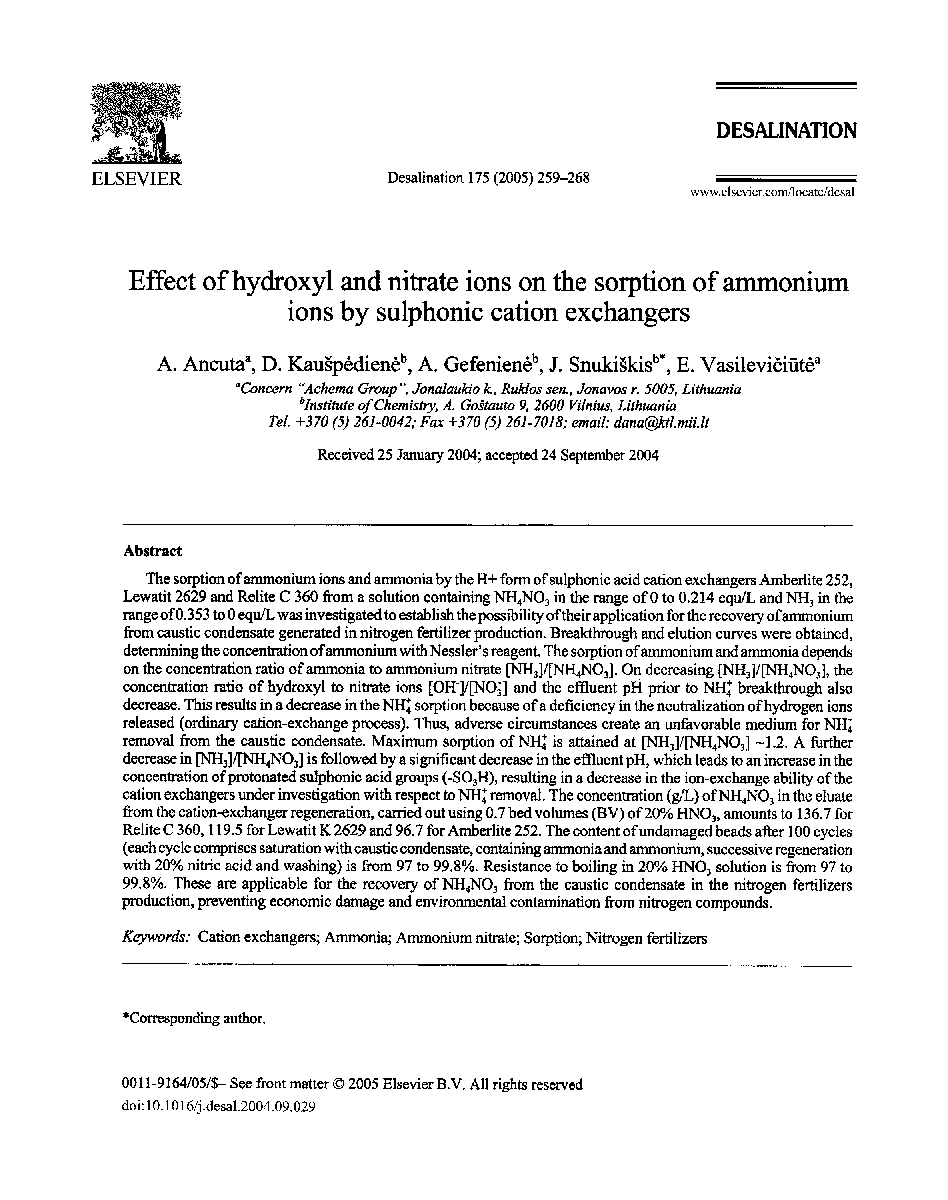| Article ID | Journal | Published Year | Pages | File Type |
|---|---|---|---|---|
| 10386196 | Desalination | 2005 | 10 Pages |
Abstract
The sorption of ammonium ions and ammonia by the H+ form of sulphonic acid cation exchangers Amberlite 252, Lewatit 2629 and Relite C 360 from a solution containing NH4NO3 in the range of 0 to 0.214 equ/L and NH3 in the range of 0.353 to 0 equ/L was investigated to establish the possibility of their application for the recovery of ammonium from caustic condensate generated in nitrogen fertilizer production. Breakthrough and elution curves were obtained, determining the concentration of ammonium with Nessler's reagent. The sorption of ammonium and ammonia depends on the concentration ratio of ammonia to ammonium nitrate [NH3]/[NH4NO3]. On decreasing [NH3]/[NH4NO3], the concentration ratio of hydroxyl to nitrate ions [OHâ]/[NOâ3] and the effluent pH prior to NH+4 breakthrough also decrease. This results in a decrease in the NH+4 sorption because of a deficiency in the neutralization of hydrogen ions released (ordinary cation-exchange process). Thus, adverse circumstances create an unfavorable medium for NH+4 removal from the caustic condensate. Maximum sorption of NH+4 is attained at [NH3]/[NH4NO3] â¼1.2. A further decrease in [NH3]/[NH4NO3] is followed by a significant decrease in the effluent pH, which leads to an increase in the concentration of protonated sulphonic acid groups (-SO3H), resulting in a decrease in the ion-exchange ability of the cation exchangers under investigation with respect to NH+4 removal. The concentration (g/L) of NH4NO3 in the eluate from the cation-exchanger regeneration, carried out using 0.7 bed volumes (BV) of 20% HNO3, amounts to 136.7 for Relite C 360, 119.5 for Lewatit K 2629 and 96.7 for Amberlite 252. The content of undamaged beads after 100 cycles (each cycle comprises saturation with caustic condensate, containing ammonia and ammonium, successive regeneration with 20% nitric acid and washing) is from 97 to 99.8%. Resistance to boiling in 20% HNO3 solution is from 97 to 99.8%. These are applicable for the recovery of NH4NO3 from the caustic condensate in the nitrogen fertilizers production, preventing economic damage and environmental contamination from nitrogen compounds.
Related Topics
Physical Sciences and Engineering
Chemical Engineering
Filtration and Separation
Authors
A. Ancuta, D. KauÅ¡pÄdienÄ, A. GefenienÄ, J. SnukiÅ¡kis, E. VasileviÄiÅ«tÄ,
